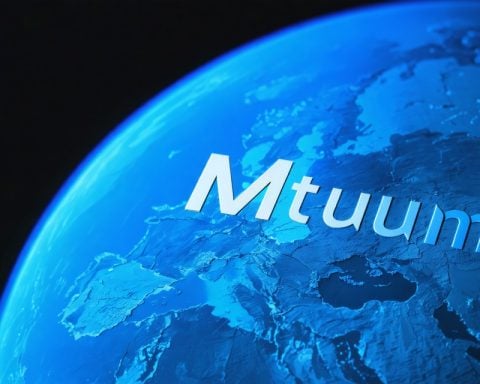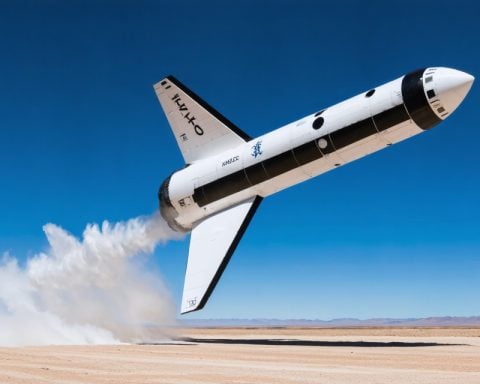- ISRO faced a challenge with the NVS-02 satellite after its thrusters failed to ignite, leaving it in the wrong orbit.
- Despite this setback, ISRO is exploring alternative strategies to utilize the satellite while communication and systems remain stable.
- The NVS-02 satellite is integral to the NavIC program, enhancing navigation services across India.
- Potential applications include precision agriculture, emergency response, and fleet management, showcasing its importance.
- ISRO’s response highlights their resilience and commitment to innovation in the face of challenges.
- This situation emphasizes that setbacks in space exploration can lead to new opportunities and insights.
The Indian Space Research Organisation (ISRO) recently encountered an unexpected hurdle in its mission to deploy the NVS-02 navigational satellite. After a successful launch aboard the GSLV-Mk 2 rocket, where it marked ISRO’s impressive 100th launch, things took a twist when the satellite’s thrusters failed to ignite. This malfunction prevented the crucial alignment of the satellite into its designated orbit, leaving it stranded in an unsuitable elliptical path.
Despite the setback, ISRO remains resilient. They are actively exploring alternate strategies to leverage the NVS-02 for navigation, even while it orbits in a Geosynchronous Transfer Orbit (GTO). Communication with the ground station is stable, and the satellite’s systems are reported as healthy, showcasing the robustness of ISRO’s technology.
This satellite is a key player in India’s ambitious Navigation with Indian Constellation (NavIC) program, designed to deliver precise positioning services across India and beyond. The NVS-02’s advanced navigation payload is expected to enhance capabilities in areas like precision agriculture, emergency response, and fleet management.
While the journey hasn’t unfolded as planned, ISRO is committed to finding solutions and adapting their mission. This resilient spirit highlights the agency’s dedication to innovation and progress in space technology.
The takeaway? In the realm of space exploration, every setback unfolds new challenges and opportunities for growth. Stay tuned as ISRO navigates this pivotal moment!
Unveiling the Future: ISRO’s NVS-02 Satellite Mission – Navigating Challenges and Opportunities
Overview of the NVS-02 Mission
The Indian Space Research Organisation (ISRO) recently faced a significant challenge in its NVS-02 navigational satellite mission, marked by the failure of the satellite’s thrusters to ignite after a historic launch aboard the GSLV-Mk 2 rocket, which was ISRO’s 100th launch. This complication has left the satellite stranded in a Geosynchronous Transfer Orbit (GTO), undermining its ability to transition into the desired orbit.
Current Status and Prospects
Despite the unexpected hurdle, ISRO has maintained stable communication with the satellite and confirmed the health of its systems. The organization is actively exploring alternative strategies to utilize the satellite in its current orbit, showcasing its commitment to innovative solutions.
Key Features of the NVS-02 Satellite
– Advanced Navigation Payload: The NVS-02 satellite is equipped with state-of-the-art navigation technology crucial for applications like precision agriculture, emergency response systems, and fleet management.
– Part of NavIC Program: NVS-02 plays a significant role in India’s Navigation with Indian Constellation (NavIC) program, which aims to offer high-accuracy positioning services to users in India and surrounding regions.
Insights on Navigational Technologies
1. Market Forecasts: The satellite navigation market is projected to grow significantly, driven by advancements in satellite technologies and increasing demand for precise positioning services across various sectors including transportation, agriculture, and disaster management.
2. Trends in Space Technology: Advances in satellite technology will likely continue to enhance capabilities in data collection and processing, with improved accuracy and reliability of navigation services.
3. Sustainability: ISRO is committed to sustainable practices in space exploration, focusing on reducing space debris and ensuring environmental protection during satellite launches.
Limitations and Challenges
– Technical Issues: The failure of thrusters exemplifies the technical challenges faced in space missions, necessitating ongoing research and development to improve satellite reliability.
– Cost Implications: Any technical malfunction can lead to budgetary constraints and resource reallocation, impacting future mission planning and execution.
Frequently Asked Questions
1. What is ISRO’s strategy for handling the current situation with NVS-02?
– ISRO is exploring alternative operational strategies for the NVS-02 satellite to optimize its use while it remains in GTO. Communication channels are stable, and efforts are underway to assess the potential for delivering some services even in its current state.
2. How does the NVS-02 contribute to India’s positioning services?
– NVS-02 enhances India’s NavIC program by providing high-precision navigational data vital for various applications, which are essential for sectors ranging from agriculture to national defense.
3. What are the implications of satellite failures on future ISRO missions?
– Although setbacks like the NVS-02 satellite’s thruster failure can affect timelines and planning, they also provide valuable insights into the operational challenges of space technology, encouraging ISRO to innovate and advance their methodologies for future missions.
For more detailed information about ISRO and its missions, visit ISRO.









